![Event>> Goodwood Revival – The Racing [part One]](https://s3.amazonaws.com/speedhunters-wp-production/wp-content/uploads/2009/09/24230700/SH-Revival-RaceA-054_QAw5_0.jpg)
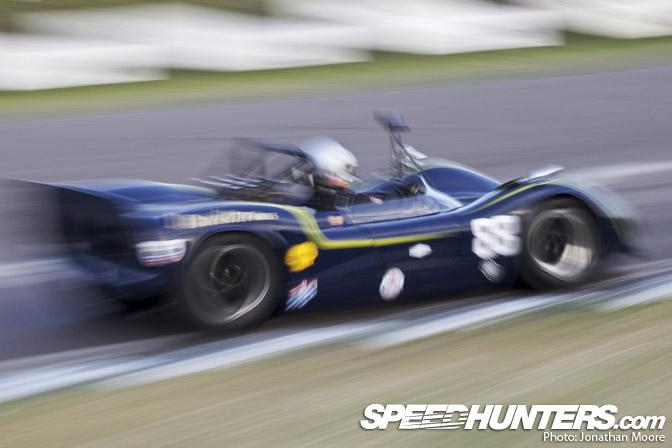
With all the other attractions on offer around Goodwood, it’s actually easy to forget that the three-day event is packed with on-track racing. When the revving of engines in the paddocks dies down there’s always the echoes of the cars running round the track – there’s no such thing as quiet time at Goodwood.
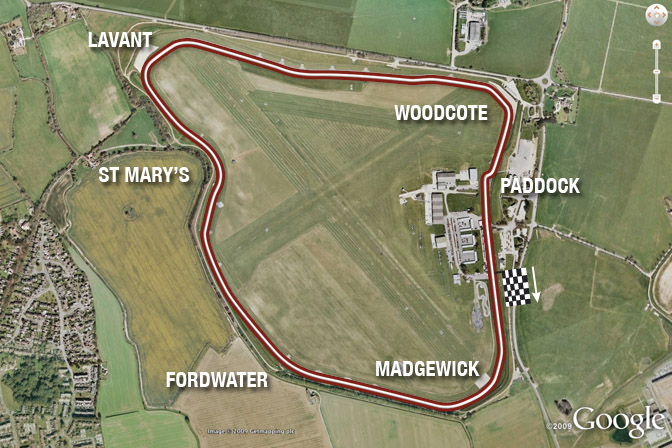
The track layout is the direct result of Goodwood’s original purpose. As with so many circuits in England, Goodwood evolved from a World War II aerodrome – Westhampnett to be precise – and the linking up of the perimeter roads in the post-war years. Westhampnett was a fighter base, with two squadrons of Spitfires flying out of its grass strips during the Battle Of Britain and then American-piloted Spits and Typhoons later in the war. The cross of the runways is clear in this GoogleMaps image.
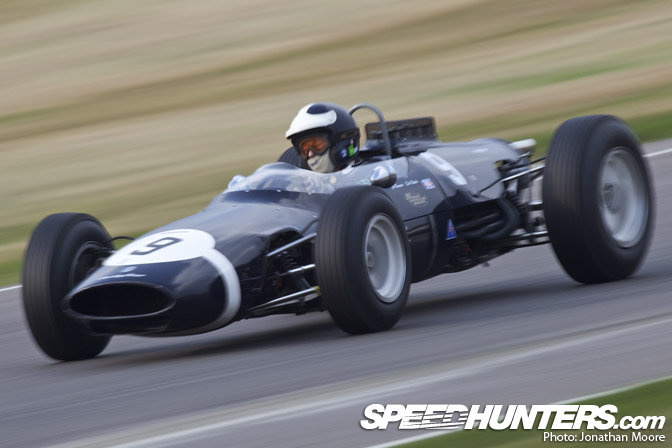
Racing started pretty quickly after the end of hostilities as bored fighter pilots tried to find ways to reach the same adrenaline highs they had back in action – and they didn’t have to go far from their old home. The perimeter road was closed off to form a very fast, flowing layout and racing started in 1948. Over the next 18 years all kinds of contemporary series hit Goodwood’s hallowed track, the highs being the Glover Trophy Formula One non-championship races, the Goodwood Nine Hours enduro and the RAC Tourist Trophy sportscar race – the latter a name that lives on with the modern FIA GT championship’s annual visit to Silverstone and also in a race at the Revival itself.
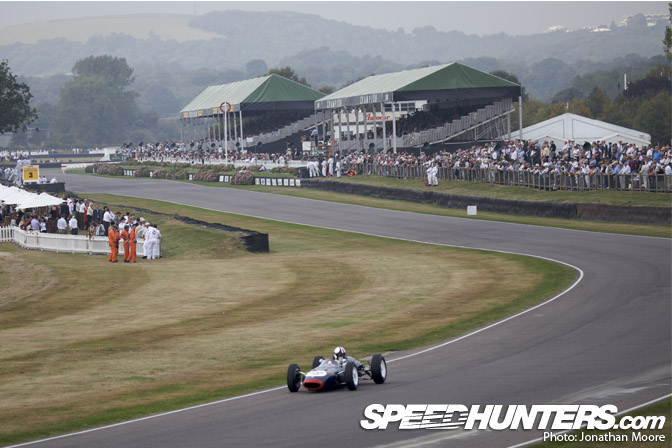
The track was closed to organised racing in 1966, as the owners weren’t prepared to modify the circuit to comply with new safety standards: what closed in ’66 is exactly what’s there now – perfectly preserved, buildings gleaming white, haybales in place and limited run-off awaiting anyone venturing off the circuit.
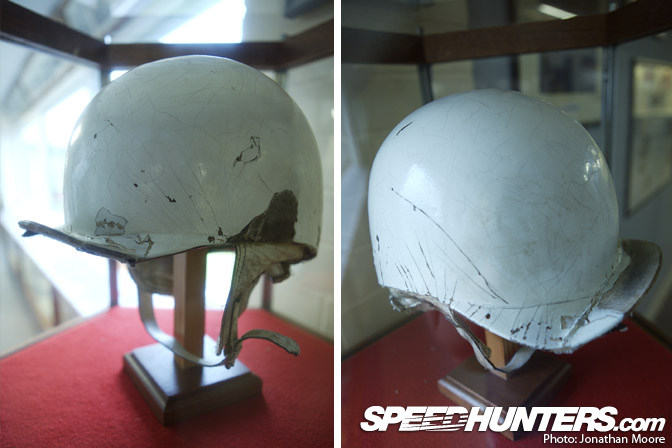
Driving legend Stirling Moss is inextricably linked to Goodwood: he won the first ever race held there in 1948, at the wheel of a 500cc Cooper; he won 21 races at the track; and his career-ending crash also happened at Goodwood, at St Mary’s corner in an F1 Lotus in 1962. The helmet he was wearing on the day is now in the Grand Prix Collection at Donington Park circuit.
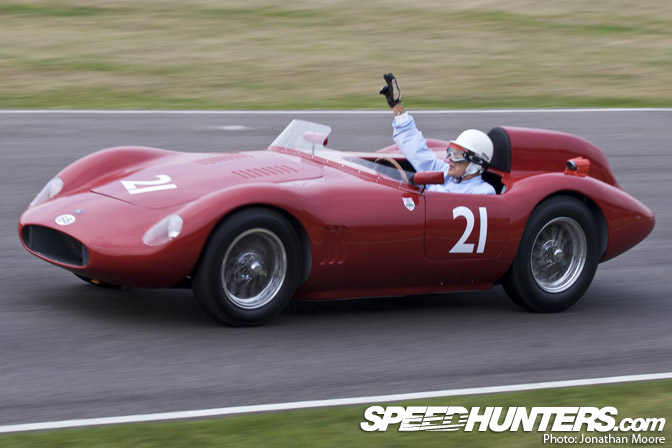
This year Moss celebrated his 80th birthday: along with a more sedate parade of cars he was still behind the wheel of an OSCA FS372 in the Lavant Cup race.
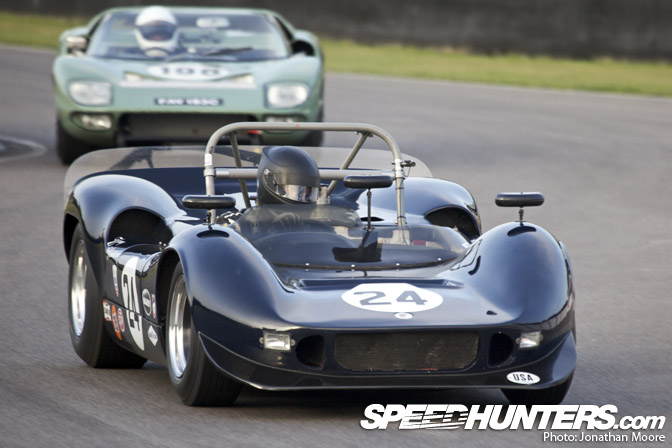
McLaren founder Bruce McLaren was another Goodwood casualty. He was killed testing one of his monstrous M8D Can-Am machines at the track in 1970, but his cars live on and as usual were out in force this weekend – like the McLaren-Chevrolet M1-B shown here and in the opening shot.
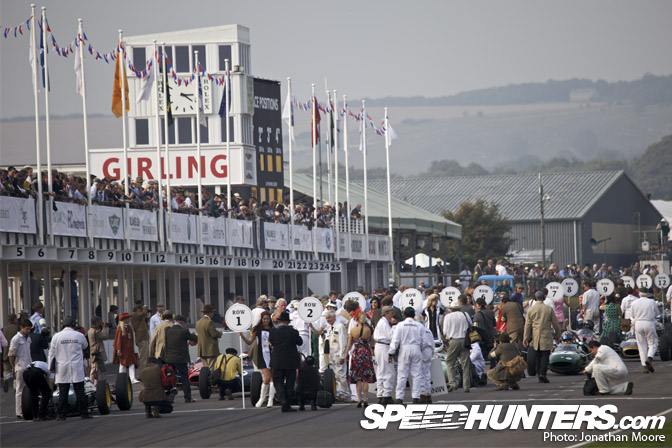
All the 16 races over the weekend are based on trophy races that took place when Goodwood was originally open. The specific cars and classes allowed to run change subtly from year to year, but there’s always a good mix of sportscars, touring cars, F1, bikes and sports prototypes brought to Goodwood by owners from all over the world. Friday is qualifying day, though the on-track efforts are hardly less frantic than on the race days: most drivers throw their often-priceless machines around like they were, well… race cars! It’s fantastic to see these machines being taken to the edge – and often beyond!
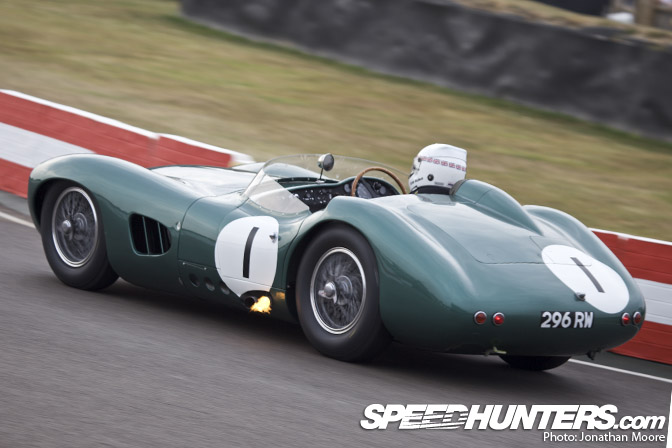
The Lavant Cup is for World Championship Sportscars from 1958-59. Two of these svelte Aston Martin DBR1s were out, the number 1 car maybe running a different engine as it was constantly spitting flame on overrun. We’ll take a closer look at these cars in the paddock: what a sight they made.
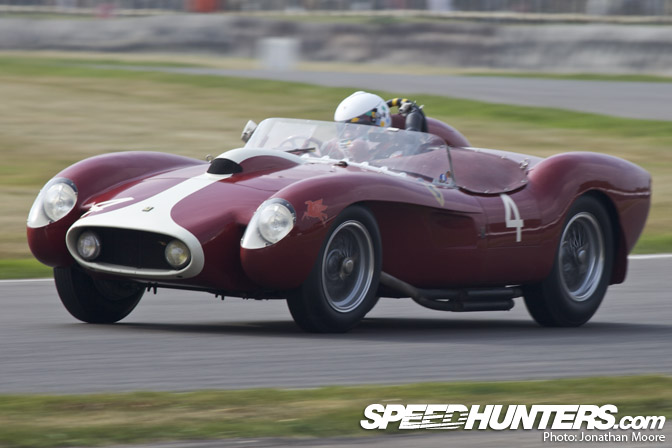
There was a good mix of old Ferraris in the field as well. This Ferrari 250 wasn’t quite taken to the limit, running about 10 seconds off the pace, but at least that made it easier to appreciate its lines.
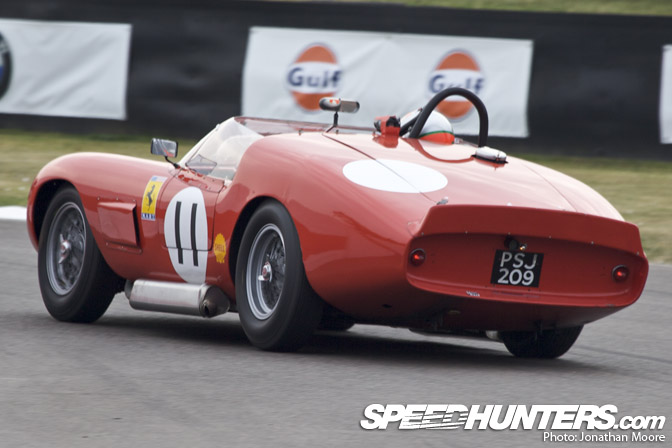
At the opposite end was the race-winning Ferrari 246S Dino, driven by Nick Leventis and Bobby Verdon-Roe. BVR absolutely wrung the neck of the Ferrari, sideways out of every corner, bonnet rearing up as he put the power down. The crowd loved it, and he was a popular winner. Alongside this historic car, Leventis has been running in the Le Mans Series this year in a Ginetta-Zytek GZ09S LMP1 prototype. What a difference in power and down-force!
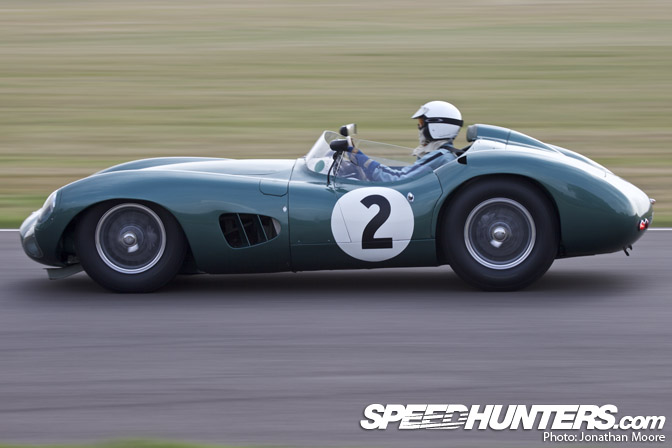
Three competitors in profile: firstly the number 2 DBR1. This was driven by the partnership of Richard Attwood and Tony Dron, both successful racers at the highest level over the last 40 years.
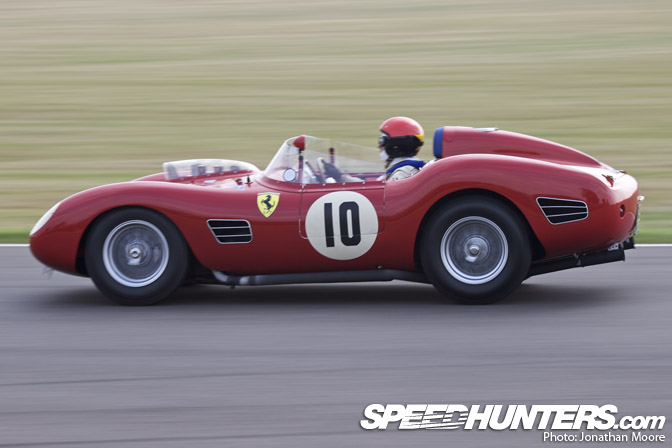
Next up is another 246S Dino, this one driven by Juan Barazi and Stuart Moseley,and another driver pairing normally seen in an LMP car. The side grills, big rear wheels and top intake give it a slightly different stance to the race-winner – this is very much the time where team cars with the same type number were often running completely different specs or bodywork. No mass-manufacturing here; all hand-built and labour intensive.
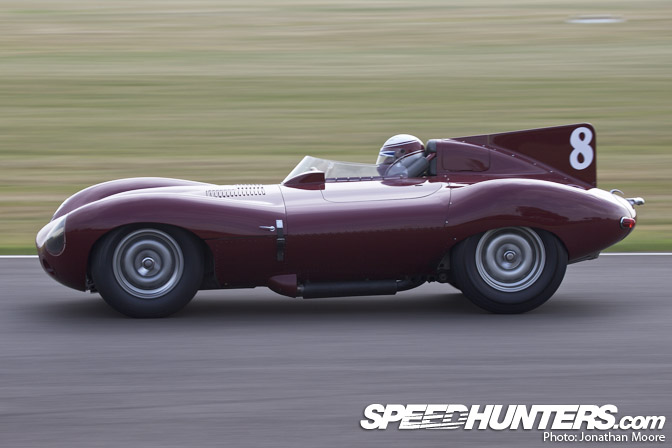
Finally this Jaguar D-type: one of the first cars to have a monocoque chassis and to be properly influenced by aerodynamics. The first production D-type sold at auction last year for over £2million! There was a company in the Goodwood market selling a modern replica D-type for considerably less…
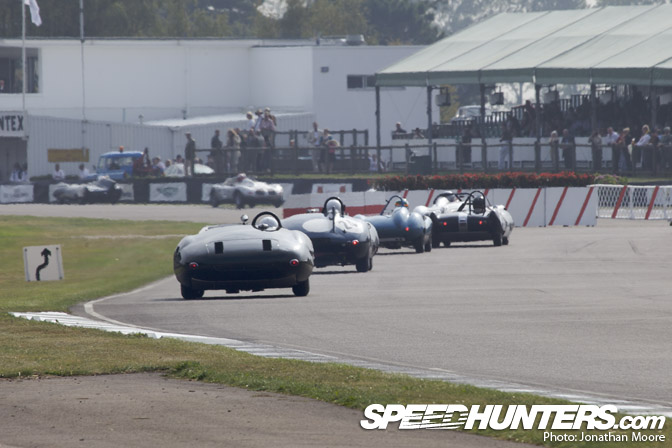
With the Leventis/Verdon-Roe Ferrari a minute up the road, the race broke down into packs of pursuing cars: Lola, Lister and Porsche filled out the field.
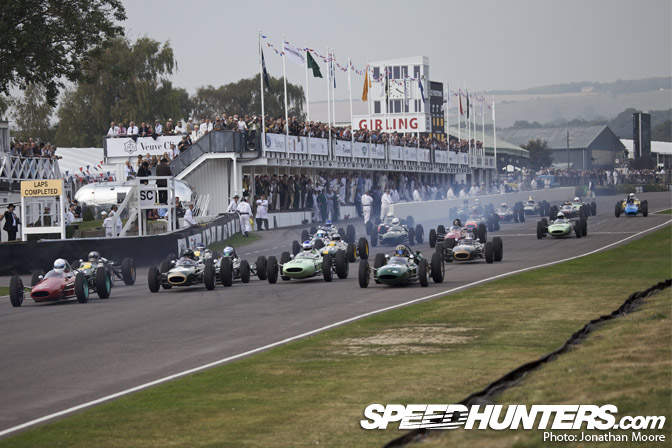
Almost 30 cars took the start of the Glover Trophy, which was originally held in the Spring at Goodwood between 1949 and 1965. The grid comprised 1.5L F1 and Tasman cars from between 1961-65. Plenty of burning rubber at the start!
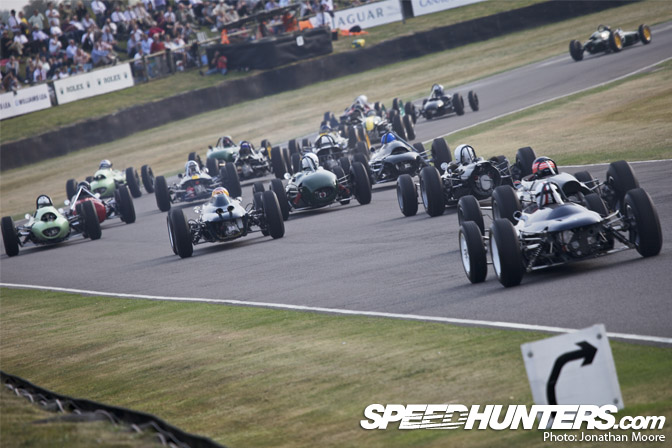
The pack streams Into Madgewick and then heads out towards the fast back section of the track.
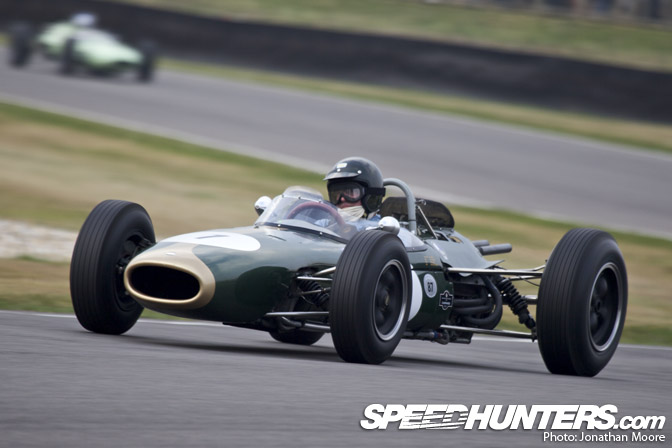
Historics master Martin Stretton won the race in a Lotus-BRM 24, but I did like the fact that James King in the second place Brabham-Climax BT7 wore authentic-looking headgear.
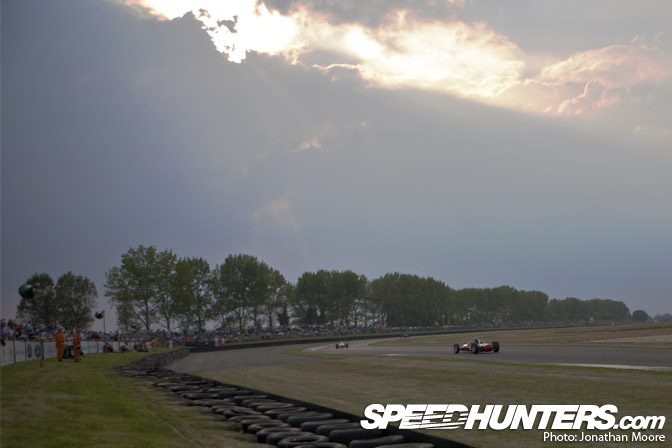
Lotus filled out five of the top six places at the end. A rare sight was a bright yellow Ferrari 156 Sharknose – the result of a recent restoration.
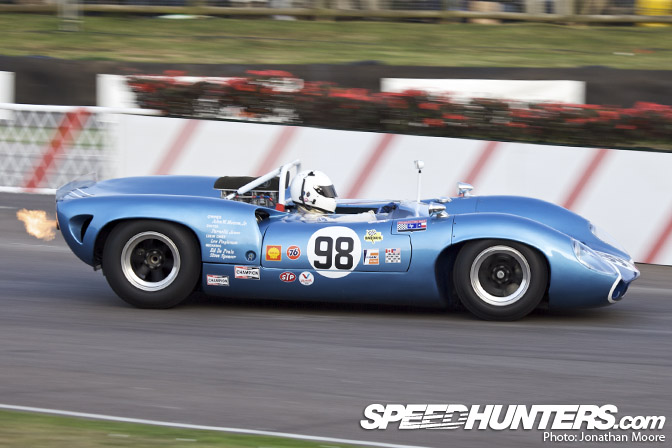
But if there’s one race to see, it’s got to be the big flame-spitting sports prototypes and early CanAm cars. Absolute beasts. I was going to say they have far too much power, but no driver would ever complain about that… This is the pole-position Lola-Chevrolet T70 Spyder of Andrew Smith; he finished third in the race.
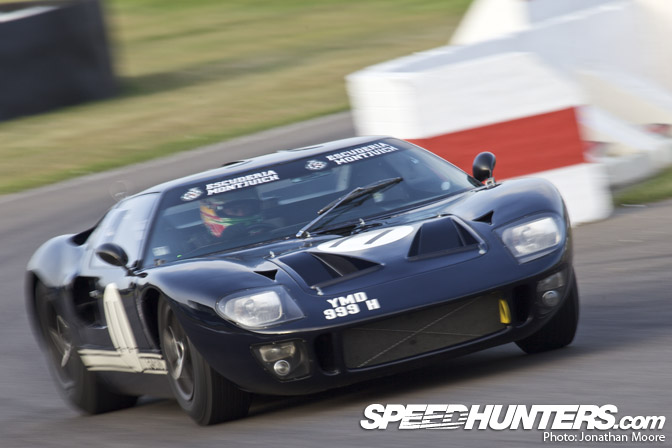
These cars made up the grid for the Whitsun Trophy – again, about 30 cars took part. There are never sparse grids at Goodwood, as entries are always over-subscribed. GT40s are always a fantastic site, but the entry for this race had a difference: two of the four were ‘regular’ GT40s, like this one piloted by Joaquin Folch – he’s normally seen at the wheel of a Parmalat-sponsored Brabham BT49c in the Historic F1 championship.
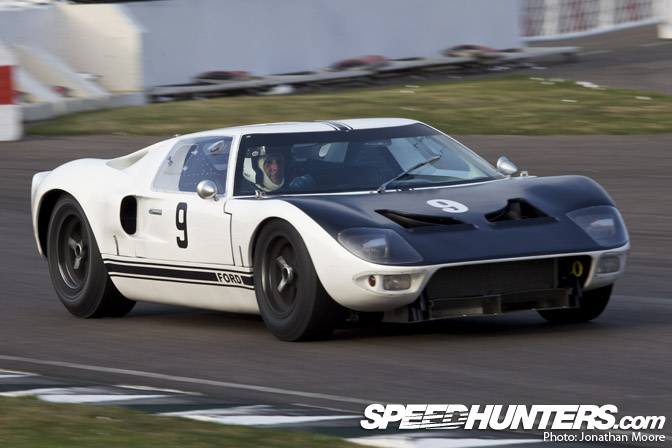
But of the other two, there was this early GT40 prototype and then something I’d never seen before – a GT40 roadster (seen in an earlier picture behind the #24McLaren)! Neither of these classics were slow, either. They qualified second third and second respectively, within a second of the Lola.
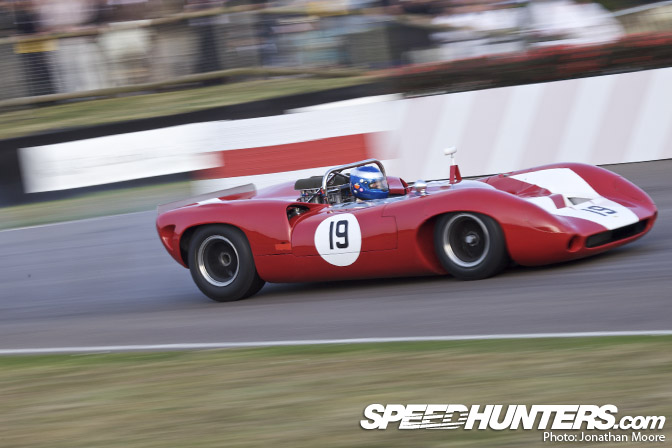
The Lola T70 is a beautiful car in all its different iterations, but I think this might be the best looking – the arrow livery really makes it. Here’s Paul Knapfield finding the limit of grip in his Spyder.
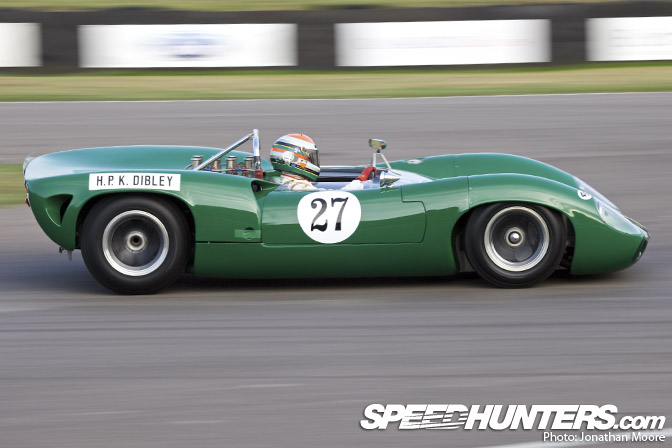
And another T70. Five of them went up against four McLarens. The big American V8 blocks in the back made these cars fly. And the sound! You can’t beat US cubic inches.
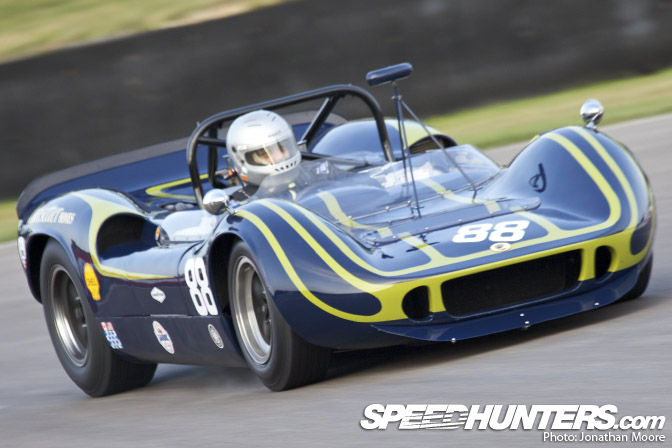
Back to McLarens, and here’s the race-winning M1B. One of the first in a family of jaw-dropping machinery that dominated the USRRC and CanAm series in the ’60s and ’70s, ending up with the brutal M8F. CanAm grew out of Group 7 sportscar rules. Basically unrestricted, anything goes, louder, faster… No series before or since has had such open, simplistic regulations. A proper racing series.
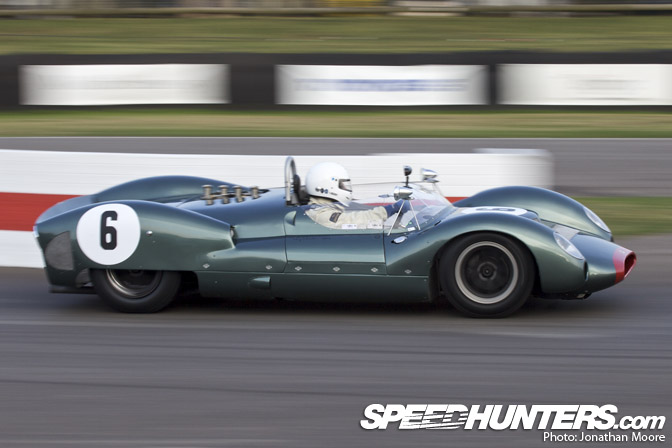
This is a Cooper-Maserati T61P Monaco – another example of mating British sportscar know-how to big engines, but this time a 5L V8 Maserati, and it has much smoother lines than the overt firepower of the later CanAm machines.
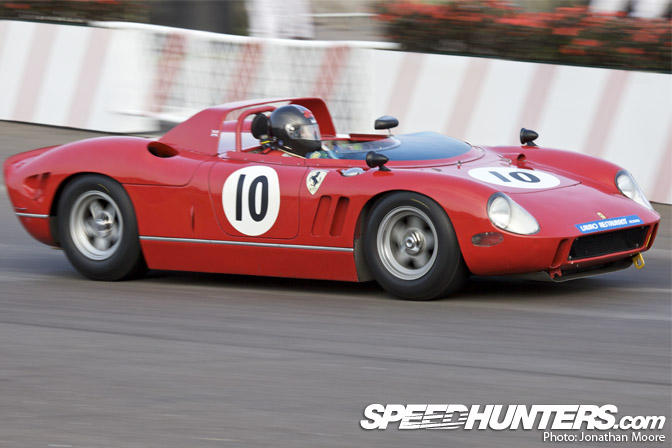
There are so may Ferraris about it’s easy to get a bit nonchalant about them! Here’s Peter Ratcliffe’s 330P.
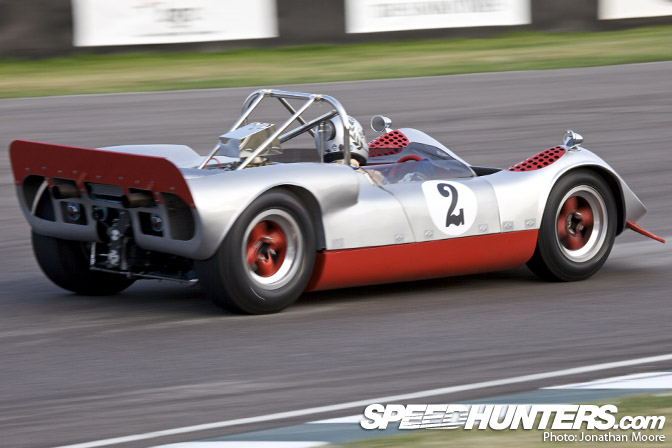
The Chinook Chevrolet MK2 was a Canadian entry, a the second attempt at taking on the might of McLaren by this small team; you can see the obvious M1 styling cues.
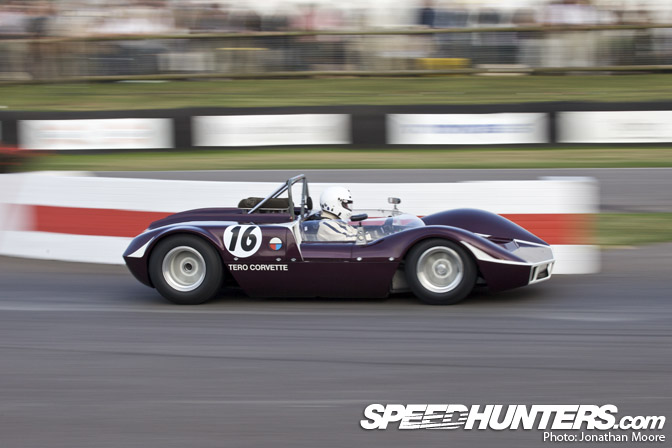
And finally this Hamill-Chevrolet SR3: it sported an angular front end that was recognisably Chevy. The open regs means many small teams put together cars, some with names matching the brutal racing: also on the grid at Goodwood were the Attila-Chevrolet and Wolverine-Chevrolet!
Jonathan Moore






wallpaper of #88 mclaren and #24 mclaren please.
Aston #1 and #2 wallpaper plz
The Can-Ams are so cool especially the Lola..Dtype jag.........has to be my favorite race car of all time, here is a pic with my favorite actor............................ http://www.thecoolist.com/wp-content/uploads/2009/05/steve-mcqueen-jaguar-xkss_01.jpg
Looks like such great fun.
It is definitely on my list of "must do's"
That helmet reminds me just how dangerous racing was in the '50s-'60s! Ahh, the DBR1--possibly the prettiest race car of all time! (The "jowls" of the Testarossa never did it for me.) And the Can-Am cars! Pure sex on wheels! Love the L-O-L-A Lolas! The McLarens were simply beastly! Some time I have to go to a vintage race and hear those things. This post (and the preceding ones) are filled with pure Win!
Superb photographs. As per usual, fantastic article..really enjoyed it.